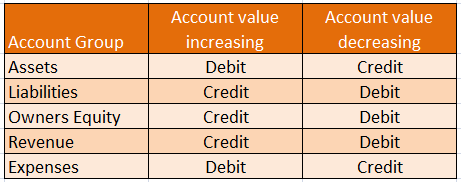
Whether it’s ensuring profitability, expanding the business, or reducing expenses, stating a clear financial goal allows you to set specific benchmarks. Once the areas that require improvement are identified, the final step in the benchmarking process is to implement changes aimed at closing the gap what is privacy audits law between your business and the reference point. This can be the most challenging part of the benchmarking process as it might involve significant changes to existing processes, strategies, and even company culture. Successful implementation often requires careful planning, clear communication, and may necessitate training staff on new processes or systems. The effectiveness of these changes should then be measured regularly to ensure that they are guiding the company closer to its benchmark.

After collecting the necessary data, the next phase is to perform an analysis of how your business’s performance stacks up against the chosen benchmark. This phase often involves quantitative analysis using tools like Excel and can involve more sophisticated statistical analysis depending on the complexity of the benchmark and the available data. The goal of this phase is to identify where your business falls short compared to the reference point, and what may be causing this. Each type of benchmarking offers its own strengths and can provide valuable insights depending on the specific objectives of the analysis. By choosing the right type, businesses can significantly enhance their performance and progress towards achieving their financial goals. If cost accounting and jit you’re looking to add cloud-based finance software to your toolkit, discover Access Financials and learn more about how it can help with benchmarking and transform your finance processes.
Additionally, benchmarking against ESG criteria provides transparency to stakeholders. It grants investors, customers, and other relevant parties an accurate and quantitative means of assessing a company’s sustainability performance. This transparency is crucial in today’s financial world, as more and more stakeholders demand corporate responsibility in environment and social issues. Investors and businesses often utilize benchmarking as a method of identifying and evaluating sustainable investment opportunities. By comparing potential investments against an established benchmark, it is possible to gauge the sustainability of different investment options.
Collecting Comparable Data
- We use Plaid, which lets you securely connect your financial accounts to Bench in seconds.
- Once the areas that require improvement are identified, the final step in the benchmarking process is to implement changes aimed at closing the gap between your business and the reference point.
- A small variation in performance is normal–every business is different and you’ll rarely hit the benchmark number exactly.
Another issue is that it can take a substantial amount of time and money to visit other organizations and collect benchmarking information. This can be a major concern for organizations that have little excess cash available to spend. what is a 12 month rolling forecast Benchmarking can also be used when an organization has a number of similar free-standing operations, such as retail store outlets or bank branches. In this situation, a company can measure the performance of each location and use these results to rank the locations. Those scoring low are expected to benchmark their results against higher-scoring locations to determine how their performance can be improved.
What is financial benchmarking?
For instance, if a company is benchmarking its profitability, it might need data on its gross margin, operating margin, and net margin for comparison. By comparing the economic input and output measures of a business with the industry benchmark, a company can evaluate its economic efficiency. Functional benchmarking takes a broader approach, looking at high-performing businesses, irrespective of their industry. After identifying aspects that make those businesses successful, similar strategies can be translated into the financial sector. This involves cross-industry analysis to make improvements based on proven success in different sectors, offering potential for unique strategies and innovation.
Benchmarking
By comparing themselves with peers and industry standards, companies can identify their own strengths and weaknesses in fulfilling their societal, environmental, and ethical obligations. The first critical step in benchmarking is pinpointing your reference points. A reference point in finance could be a similar business, an industry standard, or a key ratio. For example, if a company wanted to benchmark its profitability, it might choose the average profitability ratio of companies in its sector as the benchmark.
Once the reference points are identified, the next step is to collect data that could be compared with the benchmark. This generally involves gathering internal data reflecting your company’s current state and balancing it against the identified benchmark. The data collected should be closely related to the chosen reference point.
It provides a standard that businesses can strive to achieve and surpass. Hence, it is a key tool for companies to continuously improve their efficiency and profitability. Thereafter, these forecast estimates are benchmarked against the historical data. The historic data then serves as a benchmark for checking the reasonableness of the forecasts.
Several sustainability indices serve as valuable benchmarks in this regard. For instance, the Dow Jones Sustainability Index provides a comprehensive benchmark for sustainable investments. It measures the performance of leading companies in terms of economic, environmental, and social criteria. Investors can use such indices to evaluate the sustainability performance of different companies and make informed investment decisions. For instance, using responsible investment benchmarks encourage companies to improve their CSR performance. When a company falls short of the benchmark, it motivates them to take corrective measures that enhance their CSR commitment.
By comparing your current metrics to your past metrics, you can track your progress over time, see how far you’ve come and adjust your future goals accordingly. It is an ongoing process that needs to be repeated periodically to ensure your company stays on track and continuously improves. In doing so, it fosters an environment of continuous learning and adaption within the organization.
